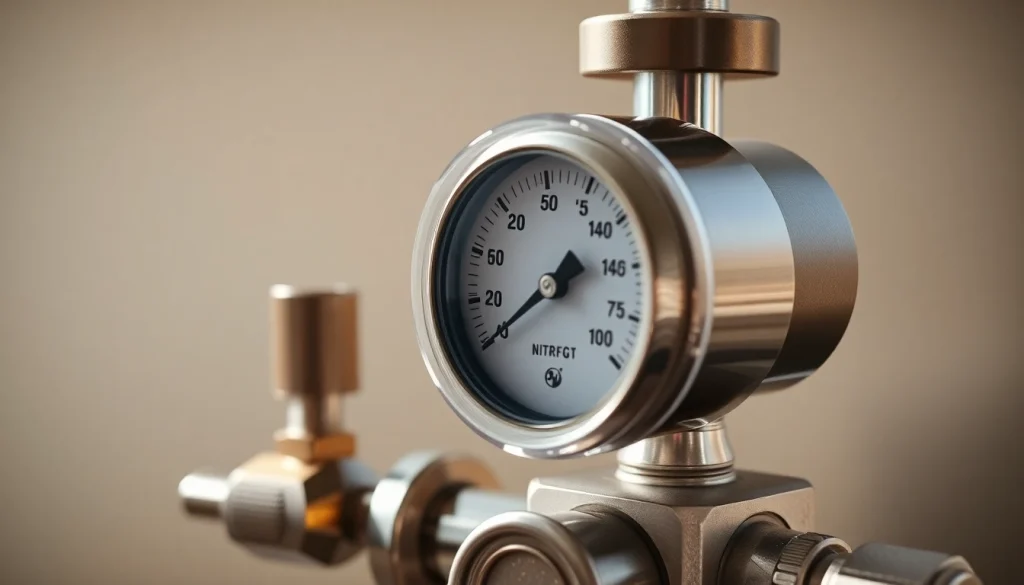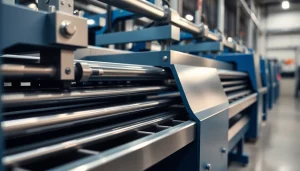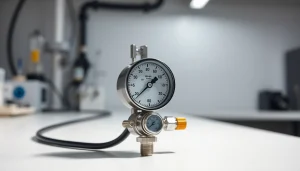Essential Insights on Nitrogen Regulators: Features, Benefits, and Applications

Understanding the Nitrogen Regulator
Nitrogen regulators are essential devices in various industries, carefully controlling the flow and pressure of nitrogen gas from cylinders. A nitrogen regulator maintains optimal operational conditions, providing safe and effective use of nitrogen in applications ranging from medical equipment to HVAC systems. In this comprehensive guide, we will explore the intricacies of nitrogen regulators, dissecting their components, mechanisms, types, applications, and much more.
What is a Nitrogen Regulator?
A nitrogen regulator is a device designed to control the pressure and flow rate of nitrogen gas. It connects directly to nitrogen cylinders, allowing users to safely utilize nitrogen in varying applications—most notably in medical and industrial settings. Regulators are crucial for ensuring that the gas is delivered at a consistent, manageable pressure, enhancing both safety and efficiency.
Key Components of a Nitrogen Regulator
The functionality of nitrogen regulators stems from several key components:
- Inlet connection: This part connects the regulator to the nitrogen cylinder, often specified by a standard like CGA580.
- Diaphragm: A thin membrane that works under pressure to regulate the flow of gas.
- Pressure gauge: Displays the current pressure level for precise monitoring.
- Adjusting knob: Used to set the desired output pressure.
- Outlet port: The area through which nitrogen gas exits, connected to various tools or equipment.
How Nitrogen Regulators Function
Nitrogen regulators function through a simple yet effective mechanism. When nitrogen gas flows from the cylinder into the regulator, it applies pressure to the diaphragm. As the pressure increases on one side of the diaphragm, it pushes against a spring-loaded mechanism, allowing gas to flow at a controlled rate. The adjustable knob allows users to set their desired outlet pressure accurately, ensuring consistent delivery to the application in use.
Types of Nitrogen Regulators
There are various types of nitrogen regulators available on the market, each tailored to specific needs and applications.
Single Stage vs. Double Stage Nitrogen Regulators
Nitrogen regulators are primarily categorized into single stage and double stage types:
- Single Stage Regulators: These are typically used in low-pressure applications. They reduce the cylinder pressure to a lower, usable pressure in one step, making them simple and cost-effective.
- Double Stage Regulators: In contrast, these regulators reduce the pressure in two stages, providing greater stability and accuracy in high-pressure situations. Double stage regulators maintain a more consistent outlet pressure, making them ideal for critical applications in laboratories and medical fields.
Adjustable and Preset Nitrogen Regulators
Another distinction between nitrogen regulators is whether they are adjustable or preset:
- Adjustable Regulators: These allow users to set their desired pressure via an adjusting knob, offering versatility across different applications. Users can fine-tune the output pressure based on specific requirements.
- Preset Regulators: Designed to deliver a fixed pressure, these regulators are helpful where parameters remain constant. They are often used in scenarios where precision isn’t as critical.
High Pressure vs. Low Pressure Nitrogen Regulators
The operating pressure is another critical factor that differentiates nitrogen regulators:
- High-Pressure Regulators: Capable of handling pressures well above standard atmospheric conditions, these regulators are necessary for industrial applications where high pressure is essential.
- Low-Pressure Regulators: Generally, these are used in applications like home brewing and food service, where gas is required at lower pressures to maintain safety while ensuring proper functioning.
Applications of Nitrogen Regulators
Nitrogen regulators play a pivotal role across various industries. Their applications range from atmospheric control to gas delivery, exhibiting versatility and reliability.
Nitrogen Regulators in HVAC Systems
In HVAC (Heating, Ventilation, and Air Conditioning) systems, nitrogen regulators are essential for pressure testing and purging lines. The regulators manage nitrogen flow into the system, ensuring that the environment is properly sealed and that the installed systems function efficiently without leaks. Properly regulated nitrogen helps in identifying leaks by maintaining the desired pressure for testing purposes.
Use in Medical and Food Industries
In the medical field, nitrogen gas is often used for cryogenic applications and equipment calibration. Medical nitrogen regulators provide accurate pressure control, critical for maintaining life-supporting systems. In the food industry, nitrogen helps preserve food quality by reducing oxygen exposure, thereby prolonging shelf life. Regulatory standards dictate that nitrogen must be delivered in a controlled manner, making these regulators indispensable.
Benefits for Home Brewing
For enthusiasts of home brewing, nitrogen regulators facilitate the infusion of nitrogen into beverages, enhancing texture and flavor. They are especially popular for brewing stouts and porters, where a creamy head and smooth mouthfeel are desired. The versatility of adjustable nitrogen regulators allows home brewers to experiment and perfect their brews.
Choosing the Right Nitrogen Regulator
Selecting the appropriate nitrogen regulator depends on several important factors that should be carefully considered before purchase.
Factors to Consider When Buying a Nitrogen Regulator
When choosing a nitrogen regulator, consider the following factors:
- Application: Identify the primary application for the regulator. Will it be used in HVAC, medical, or brewing?
- Pressure Requirements: Assess the pressure range needed for your specific application. Will you need high-pressure capabilities or will low-pressure suffice?
- Type of Regulator: Decide between single stage, double stage, adjustable, or preset types based on your functionality needs.
- Material and Build Quality: Look for regulators made from durable materials, to ensure longevity and reliability.
- Brand Reputation: Consider brands that are well-regarded in the industry, often providing better warranty and support.
Common Brands and Models of Nitrogen Regulators
Several reputable brands manufacture nitrogen regulators known for quality and reliability. Some of the prominent ones include:
- Victor: Offers a range of high-quality nitrogen regulators ideal for welding and cutting applications.
- Smith: Known for durable and precise regulators used in industrial settings.
- Uniweld: Provides versatile options suitable for both professional and home use.
- Airgas: Supplies a variety of industrial gas equipment, including nitrogen regulators.
Maintenance Tips for Longevity
Proper maintenance is vital for increasing the lifespan of nitrogen regulators, ensuring they function correctly over the long term. Here are a few tips:
- Regularly inspect and clean the regulator to remove any debris or buildup.
- Check all seals and connections for leaks periodically; replace damaged parts promptly.
- Store regulators in a cool, dry place, away from direct sunlight and extreme temperatures.
- Always adhere to manufacturer specifications when operating or maintaining the device.
FAQs about Nitrogen Regulators
What is the purpose of a nitrogen regulator?
The primary purpose of a nitrogen regulator is to control the pressure and flow of nitrogen gas from cylinders, ensuring it can be precisely delivered to various applications under safe conditions.
Can I use a nitrogen regulator for CO2?
No, nitrogen regulators are specifically designed for nitrogen and operate differently compared to CO2 regulators due to the distinct physical properties of each gas. Each type of regulator is calibrated for its respective gas’s pressure requirements, ensuring safety and functional effectiveness.
How to troubleshoot nitrogen regulator issues?
Common issues with nitrogen regulators might include inconsistent pressure readings or gas leaks. If you experience problems:
- Check all fittings for tightness and ensure that seals are in good condition.
- Inspect the pressure gauge for accuracy; replace if malfunctioning.
- Clean the regulator to remove debris that may obstruct flow.
- If leaks persist, consult the manufacturer or a professional for further examination.






